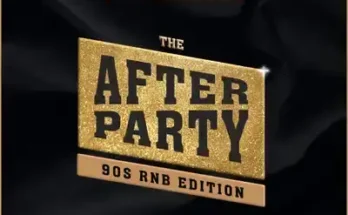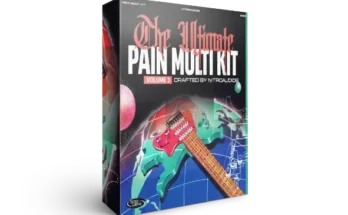AKAI S5000 [CUE+BIN] | 1.91 GB
Quantum Leap Brass East West’s Quantum Leap Brass fills an important void in most orchestral sample libraries. Desktop musicians who strive for variety and verisimilitude in their jazz and symphonic scores inevitably fall flat when it comes to adding convincing brass parts. In most sample libraries, you can find a modest assortment of solo trumpets, trombones, and saxophones, but few offerings explore the full range of expressive and idiomatic techniques that brass players use. Quantum Leap Brass, on the other hand, truly revels in the unique sounds that brass instruments make.
The Quantum Leap Brass library ($695) is offered in formats for GigaSampler, Unity, Akai S1000/5000/6000, Kurzweil, Roland, and E-mu. The five-disc collection (six discs for Akai S1000) includes an assortment of solo trumpet, three-part (unison) trumpet section, solo flugelhorn, piccolo trumpet, three-part trombone section, solo tenor and bass trombone, solo tuba, solo saxophone (soprano, alto, tenor, and baritone), and four-part (unison) French horn patches.
Producer Nick Phoenix aptly describes his collection as a “purist, no-compromise library with an emphasis on expression and dynamics.” Armed with a variety of high-quality ribbon and condenser mics, Neve and Manley preamps, and Apogee converters, Phoenix recorded all of the samples in large rooms and small to medium halls. Loops were avoided to allow the sounds to evolve naturally over time and to blend realistically in chords. Samples were restricted to the natural instrument ranges (though some of the outer limits do seem a bit strained), and special attention was paid to properly capturing the all-important attack portion of each sample. The hard work clearly paid off: this is a stellar collection of samples that mix together beautifully and encourage creative brass writing.
Mod Squad The GigaSampler version of Quantum Leap Brass (used for this review) is especially noteworthy for its many patches that employ the Mod wheel for sample switching, crossfading, and filtering. (For the hardware-sampler formats, many of the Mod-wheel-controlled patches have been split into multiple patches.) The clever use of the Mod wheel offers some exciting real-time manipulation of patches. For example, you can quickly change from doits to shake falls in one solo trumpet patch, from short falls to long falls in another, and from plunger wah to flutter wah in yet another.
Several patches combine the Mod wheel with Velocity switching to provide an even greater range of expressiveness. In one patch, for example, the Mod wheel in the down position offers three levels of staccato; in the up position it offers three levels of sustain. Of course, these multilevel patches can be quite large, but they offer an exceptional degree of real-time control.
Kickin’ Brass A couple of the trumpet patches do a wonderful job of capturing the cool Miles Davis muted sound, allowing you to switch between long, evolving sustained tones and short staccato notes. Another patch lets you change the filter setting in real time for subtle yet effective expressiveness. If subtlety isn’t your thing, though, you’ll love “minidamoocha,” an over-the-top, funky toilet-plunger patch that is perfect for 1930s band arrangements and cartoon soundtracks. The Mod wheel changes the sound instantly from short wah to sustained wah to a screaming growl that is guaranteed to make you smile.
Flugelhorn is represented by a single mellow-sounding patch with a nice round timbre, and the piccolo trumpet should serve you well the next time you need that Brandenburg Concerto sound for a project.
As with the solo trumpet patches, the trumpet section patches include a number of open and muted sounds along with an array of falls, doits, shakes, and sforzandos. The solo and unison trombones offer a comparable set of effects, including flutter crescendos, wahs, falls, slides, and scoops. Best of all, these patches sound like real trombones; you can create a big-band trombone section, and it doesn’t come off sounding like a mushy pipe organ. A great-sounding and versatile tuba rounds out the low end.
The sax patches are uniformly high in quality and loaded with playing techniques and effects that add to their expressiveness. As with the trombones, the saxes sound great as lead instruments and when combined into harmonized sections – an essential consideration for jazz charts.
The final half dozen patches offer unison French horn sections with different playing styles. Characteristic effects include sforzandos, rips, falls, and other techniques that are well suited to film scoring. It’s too bad there aren’t some solo horn patches to complete the set.
Wrap East West Quantum Leap Brass offers an impressive collection of samples. The recording quality is consistently first-rate with clean, well-miked samples and carefully matched natural reverb. The documentation is exemplary with concise yet clear descriptions of the patches and their controller setups. Several patches even include helpful hints for maximizing results. If you’re tired of boring, uninspiring brass samples, check out Quantum Leap Brass. It’s a real blast.
The 6 CD’s are broken down as follows:
CD 1 – Solo Trumpet
CD 2 – 3 Trumpets, Piccolo Trumpet & Fuglehorn
CD 3 – Solo Trombone, 3 Trombones and Bass Trombone
CD 4 – Tenor Sax, Alto Sax, Baritone Sax, Soprano Sax & 3 Sax
CD 5 – Tuba & 4 French Horns (plus demo 2 demo tracks)
CD 6 – Bonus CD of looped sustain patches for lower memory loads.
CD 1 – Solo trumpet – 21 patches (Throughout I’ve taken the number of patches from the Gigasampler version – for the Akai versions there are actually more programs in a number of cases) – Just about every variety of solo trumpet that you could imagine, multisampled as is the whole collection, multiple velocities and sustains, flutters and wahs. As with the whole collection the presented sounds are single/multi versions of single notes/chords, this isn’t a riff/loop type collection.
With the Akai versions there are more programs. Whilst the Akai 1000 version some programs need to be linked to get the full range as the whole samples are larger than the native format allows.
The sounds immediately strike you with the realism, dynamic range and sonic clarity. Whist the shorter staccato sounds aren’t terribly exciting to listen to in isolation, though totally authentic sounding, they pale compared to the more sustained samples. The advantage of the non looping samples is that you get the whole dynamic range of a note, this is especially noticeable through the sustain period of the sound.
Whilst modern synthesisers and samplers make a very good representation of a sound, the looping that invariably takes place with anything but the shortest sounds does introduce an artificial element to the sound. Here however you get the full natural evolution of a sound, the difference is subtle, though noticeable and certainly raises the quality of these sounds a whole notch above anything that can be produced by other methods, short of bringing in a real live musician.
I won’t go into too much depth about the individual sounds, boring for me to write and for you too read, there are only so many ways you can describe subtle variations in sounds !. Suffice to say there is just about every variation in a solo trumpet sound you can imagine, from short stabs, to long sustains, bright leads and short legato’s. All flawlessly played and recorded. Although I say flawlessly a better word would perhaps be realistically, there is the odd “live” element, a tiny bit of breath here, different releases that sort of thing that just add that extra touch of “real life” into a recording.
CD 2 – 3 Trumpets, Piccolo Trumpet & Fuglehorn – 11 Patches – Most of this CD is given over to the 3 Trumpets (9 of the 11). Not really much to add to what has been said about the CD 1 except of course the sounds a somewhat fuller and contain natural variances that again further differentiate three live trumpet sounds from three synthesised looped sounds. Just subtle things, like the three attacks to a sound don’t “quite” the sound same, just adds a little natural detuning etc. Very subtle differences but just add an extra “something” ambience to a sound.
Needless to say quality is exceptional.
CD 3 – Solo Trombone, 3 Trombones and Bass Trombone – 22 Patches – Slightly less variation to the sounds than the Trumpet CD’s as you might except being a slightly less expressive instrument. Once again a near flawless collection of authentic trombone sounds, very difficult to imagine that anyone could want any more (within the limitations of this remit anyway). Rich, dynamic, brass sounds, from muted solo’s to big orchestral performances. Excellent.
CD 4 – Tenor Sax, Alto Sax, Baritone Sax, Soprano Sax & 3 Sax – 29 Patches – Mostly Alto, Tenor and Baritone – Once again there is actually little to say, you load up the patch and it sounds exactly like you would expect it to. Perhaps of all the instruments captured here the saxophone is the hardest to replicate, being such an expressive instrument, there are some excellent samples here of a variety of playing styles. But I would have to say perhaps the least good impression of a live player(s). It’s no fault of the collection, more the limitations of playing back an expressive brass instrument with a keyboard.
CD 5 – Tuba & 4 French Horns – 8 Patches – By now I’m seriously wishing I’d invested in a quicker CD-ROM drive before starting ! Excellent Tuba sounds, proper rump-dum-rum sort of sound, as with any sound in the collection, just A-B against what you think is a decent sound from your synthesiser and you realise just what a difference this kind of sound does make. Whilst in isolation the “Tuba” sound on my Quadrasynth sounds quite reasonable it gets decidedly unusable compared to this real Tuba sound. French Horns are very good as well, nice thicker sounds.
CD 6 – Bonus CD – Would probably standalone as a good “Lite” version of the collection. Bit of an oddity really as if you haven’t got a decent amount of memory in your sampler, your going to struggle to get a whole lot out of much of the collection, in which case this turns out to be a very expensive sample CD. On the other hand if you have the memory then the non looped sounds are the ones to use for sure. Certainly up to the standards of the rest of the collection sonically, you do though notice the looping effect, not that it’s badly done, it’s just that they sound a little flat against the non looped version.
Open as a virtual drive with CDXtract for preview.
BIN & CUE files can be burnt as image files in Alcohol120%. Load the CUE file into Alcohol120% and burn to disc.
[toggle title=”Home page”]no home[/toggle]

http://alfalink.to/d3662dfc4a771095bd16
Please REPORT in Comment Broken Links




